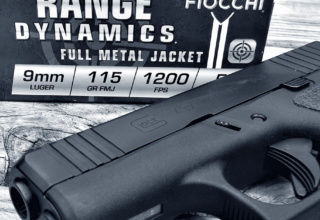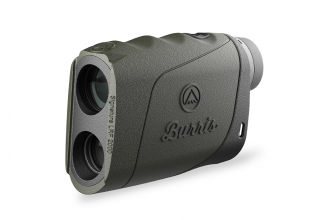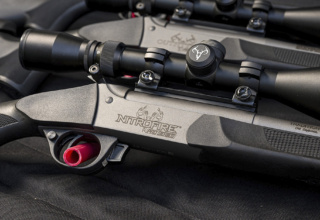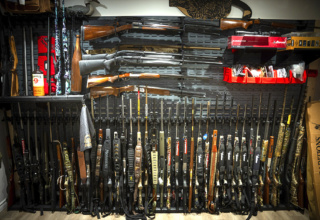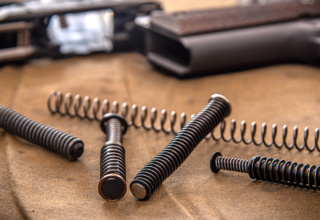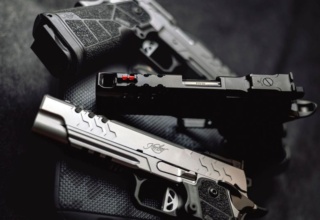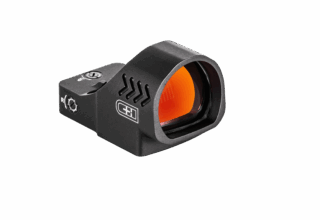There are reasons quality bow sights come with bubble levels and adjustment screws. To stay on target in any situation, it’s important to know what they tell you and how to adjust them.
An archery range across the bottom of our property allows us to shoot our bows out to 70 yards, with targets at 10-yard intervals. It is a great way to stay tuned and accurate for any season. The yard is not level, though, and the undulating ground is a great reminder to use the 3rd axis adjustment on my TRUGLO sight when shooting.
I hadn’t been shooting in a while, so recently I slipped down to the range to fling a few arrows. To my dismay, all my arrows were off the mark and hitting to the right of my aiming point. I took a second to go over the situation and was able to correct the point of impact on the next round of arrows.
My archery range is deceptive because the shooting position is uphill and the ground curves away to where the targets are placed. That incline is enough to cause issues with arrow flight. On the plus side, this mimics real-world hunting conditions, where flat terrain is often the exception rather than the rule. Thus, I am continually reminded of the importance of accounting for that previously mentioned 3rd axis.

The level in the bottom of your bow sight is the 3rd axis adjustment and it is critical when shooting inclines or declines. The little bubble that floats back and forth needs to be level when you release an arrow, otherwise, your arrow will not fly where intended. This is why target shooters and hunters alike need to practice using the level. The trick is to glance for level but not to concentrate on it and lose your focus on the target.
Visualize Each Axis
All bow sights have three axes, which are virtual lines on which the sight can rotate. The plural of axes is what we describe as the three-axis of rotation.
The 1st axis runs from left to right in front of you, parallel to the ground. If you could spin your sight to have the bottom go over the top, you’d see the imaginary line of the 1st axis. The 1st axis is usually set up in an archery shop when your bow is put together and you’ve picked all the components. A vertical and horizontal level is attached to your bowstring or riser to level your bow. Once you’ve established level, it is clamped in place, so it remains stable, allowing you to place a second level on top of the sight housing, parallel to the sight bar. If possible, spin the sight until the bubble is center to set the 1st axis. Many sights won’t have an adjustment for the 1st axis, as they are built to only mount level.
The 2nd axis is the one most archers pay attention to when sighting a bow. The 2nd axis runs on an imaginary line straight through the center of your scope as you would look through it. You would see the axis if you could spin the scope around it like the hands of a clock. A sight like the TRUGLO Rival XF is a good example of a bow sight with an adjustable 2nd axis aperture. Using micro-adjustments in a tool-less design, it is easy to adjust. With the bow still camped in a vise and the string level in place, look at the level that’s in the scope housing, which sits perpendicular to the sight bar. Adjust the scope using the 2nd axis adjustment screws until that bubble hits the center and everything will be perfectly aligned on the 2nd axis. If your sight has a built-in level, it can be used.

The third axis runs parallel to your body and through the center of your sight. To visualize the axis on an imaginary line, it would spin around you like a top or helicopter blades. When you are shooting on level ground at the range, the 3rd axis is not important. When you are shooting inclines running up or down, the 3rd axis is critical to being on target. If the 3rd axis isn’t level, your arrow will fly like it was launched from a canted bow.
To level the 3rd axis, tip your bow 45 degrees (as if you were shooting downhill) while keeping the level bubble centered on your sight bar level. If required, use the 3rd axis adjustment screw to center the bubble in your level. The 3rd axis will now be level and ready for shooting at any incline.
Many of the TRUGLO sights have 3rd axis adjustment that can be made with a screw that secures the level on the sight. It is required because the level moves on the sight body when you angle it toward or away from you at full draw.
Proper form is what keeps the 3rd axis in alignment. The shooter needs to bend at the waist to keep the bow and sight level. If you’re moving your shoulders and using the angle of your arms to align your bow, you’ll always be off target. Bend at the waist when drawing and shooting and you’ll be looking at the perfect angle through your sight.
The 3rd axis adjustment is important if you plan on hunting steep terrain or take longer shots from a treestand with steep shooting angles. Most quality sights include a level or 3rd axis adjustment. TRUGLO makes several models of single-pin and multi-pin sights with 3rd axis adjustment. The Hyper•Strike, Range•Rover, Range•Rover Pro, Carbon XS Xtreme, and Storm G2 are good examples. All sights have an easy-to-access screw to make the adjustment and lock it in place.
Now that you understand how important sight axis leveling is to accurate shooting and how it works, practice shooting with these concepts in mind for better performance in the field.






